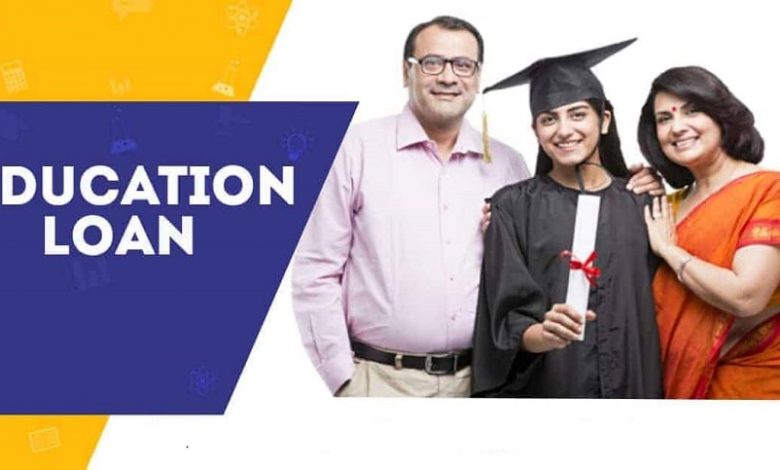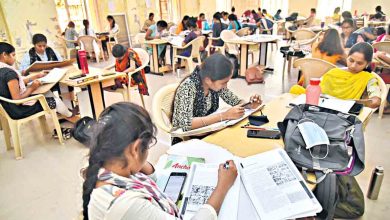Do you know about government subsidy on education loan? Learn about eligibility and benefits
Parents often liquidate their assets or use their emergency/contingency savings for their children's education, which derails their retirement plans and drains their emergency savings. Parents' personal savings can be better invested with higher returns.

One advantage of taking out an education loan is that it is cheaper than other forms of financing for higher education for a student. In addition, state-run banks also provide an additional 0.5 percent concession on interest rates for girl students.
Not only for girl students, but there are many other subsidy schemes that parents and children can take advantage of such as the Central Sector Interest Subsidy Scheme, the Padho Pardesh Education Loan Interest Subsidy Scheme, and the Dr. Ambedkar Central Sector Interest Subsidy Scheme. These schemes help in reducing the cost of education loan as the interest charged during the study period is waived off.
Parents often liquidate their assets or use their emergency/contingency savings for their children’s education, which derails their retirement plans and drains their emergency savings. Parents’ personal savings can be better invested with higher returns. Lenders sanction education loans to students based on their future earning capacity and repayment capacity, which frees the parents from the financial burden.
“Timely repayment of education loans helps students build a good CIBIL score, which helps them get better interest rates and terms for future loans they might take, like home loans, car loans, etc,”
Following are the details of the subsidy schemes, their features and benefits and eligibility conditions:
Central Sector Interest Subsidy Scheme:
The Ministry of Human Resource Development launched this scheme in 2009 to facilitate higher education financing for students belonging to financially weaker backgrounds. The interest subsidy scheme is applicable only for technical/professional courses in India. The scheme cannot be availed on loans for abroad education.
Features and benefits of the scheme
- The scheme provides full interest subsidy, that is, the interest is waived off, during the moratorium period. After the period ends, the student will have to pay the interest amount on the loan amount.
- The scheme is applicable only once, either for undergraduate or postgraduate courses. Integrated courses are also eligible under it.
- Education loans up to Rs 7.5 lakhs taken without collateral and third-party guarantee are eligible under the scheme.
Eligibility
- The parental income must be up to Rs 4.5 lakh per annum to avail of the scheme.
Padho Pardesh Education Loan Interest Subsidy Scheme:
Established in 2006, the scheme provides an interest subsidy to students belonging to economically weaker sections of notified minority communities to provide better higher education opportunities abroad and enhance their employability.
Features and benefits of the scheme
- Students enrolled in overseas educational studies at Master’s, or M.Phil/Ph.D. levels are eligible.
- Students are eligible under the scheme only once, either for Master’s, M.Phil, or Ph.D. levels.
- Students should apply for the benefits in the 1st year of their study. Applications received during 2nd year of study or subsequent years are not accepted.
- The interest is waived during the moratorium period. After the period ends, students will have to repay the interest amount on the outstanding loan amount.
Eligibility
- Total parental income or students with a job should not exceed Rs 6 lakh per year.
- Students should have enrolled in a course listed under the scheme.
Dr. Ambedkar Central Sector Scheme of Interest Subsidy:
Dr. Ambedkar Central Sector Scheme of Interest subsidy promotes educational advancements for students from Other Backward Classes (OBC) and Economically Backward Classes (EBC).
Features and benefits of the scheme
- The subsidy is on the interest payable for the period of moratorium on education loans for abroad students at Masters, M.Phil, and Ph.D. Levels.
Eligibility
- Students applying for the interest subsidy should submit the OBC Caste certificate issued by the competent authority.
- For OBC candidates, the total income brought home should not exceed the present Creamy Layer criteria. For EBC candidates, the income ceiling is Rs 2.50 lakh per year.
- For both categories, students need to submit the income certificate to determine the income ceiling.
- Students should have enrolled in a course listed under the scheme.
“Under the schemes mentioned, the interest amount payable during the moratorium period (study period + one year) is borne by the government. If the student does not apply under the scheme, the interest incurred during this period is distributed evenly in the EMIs (which are then paid by the borrower). The interest rate remains the same. So, the subsidy amount depends on the interest amount calculated, which is case-specific (depends on the loan amount, interest rate, loan tenure, etc.),”
While the subsidies make the above-mentioned education loans even cheaper, remember that every interest subsidy scheme has strict eligibility criteria.
So, before applying for the subsidies, you must check the eligibility criteria as given below:
- The Central Sector Interest Subsidy Scheme is applicable for students applying for an education loan of up to Rs 7.5 lakh to study professional or technical courses in India.
- The Padho Pardesh Interest Subsidy Scheme is applicable for students belonging to communities declared as a minority under Section 2 (c) of the National Commission for Minorities Act, 1992.
- Dr. Ambedkar Central Sector Scheme of Interest Subsidy is applicable for students belonging to Other Backward Classes and Economically Backward Classes.
Also Read: Oxford University Announces New Fully-Funded Scholarship For Indian Students. Check All Details Here







